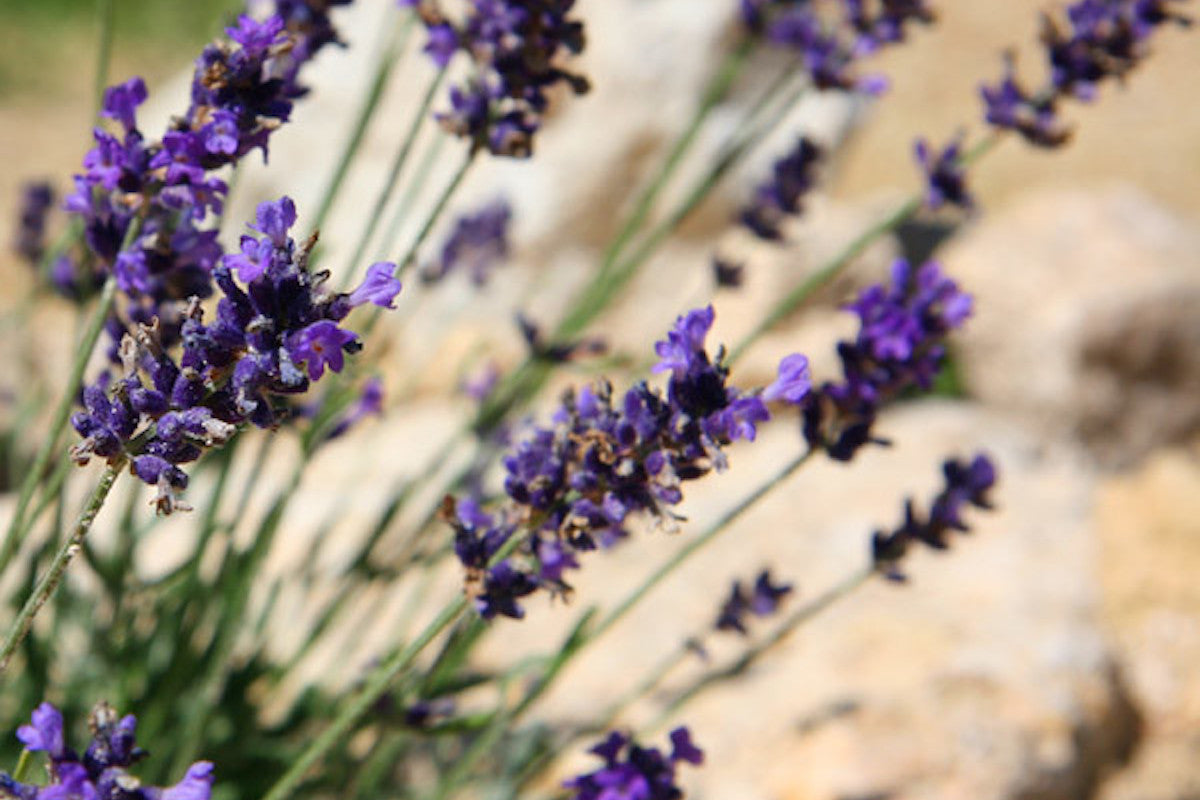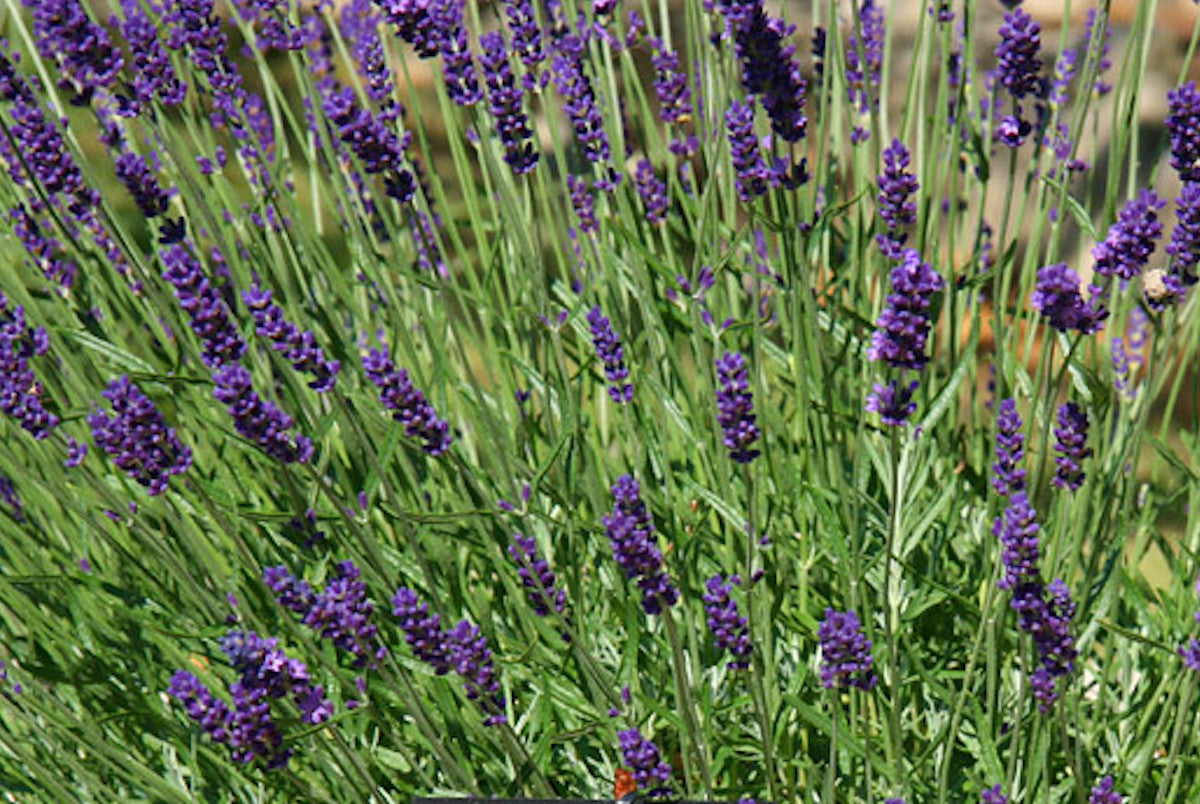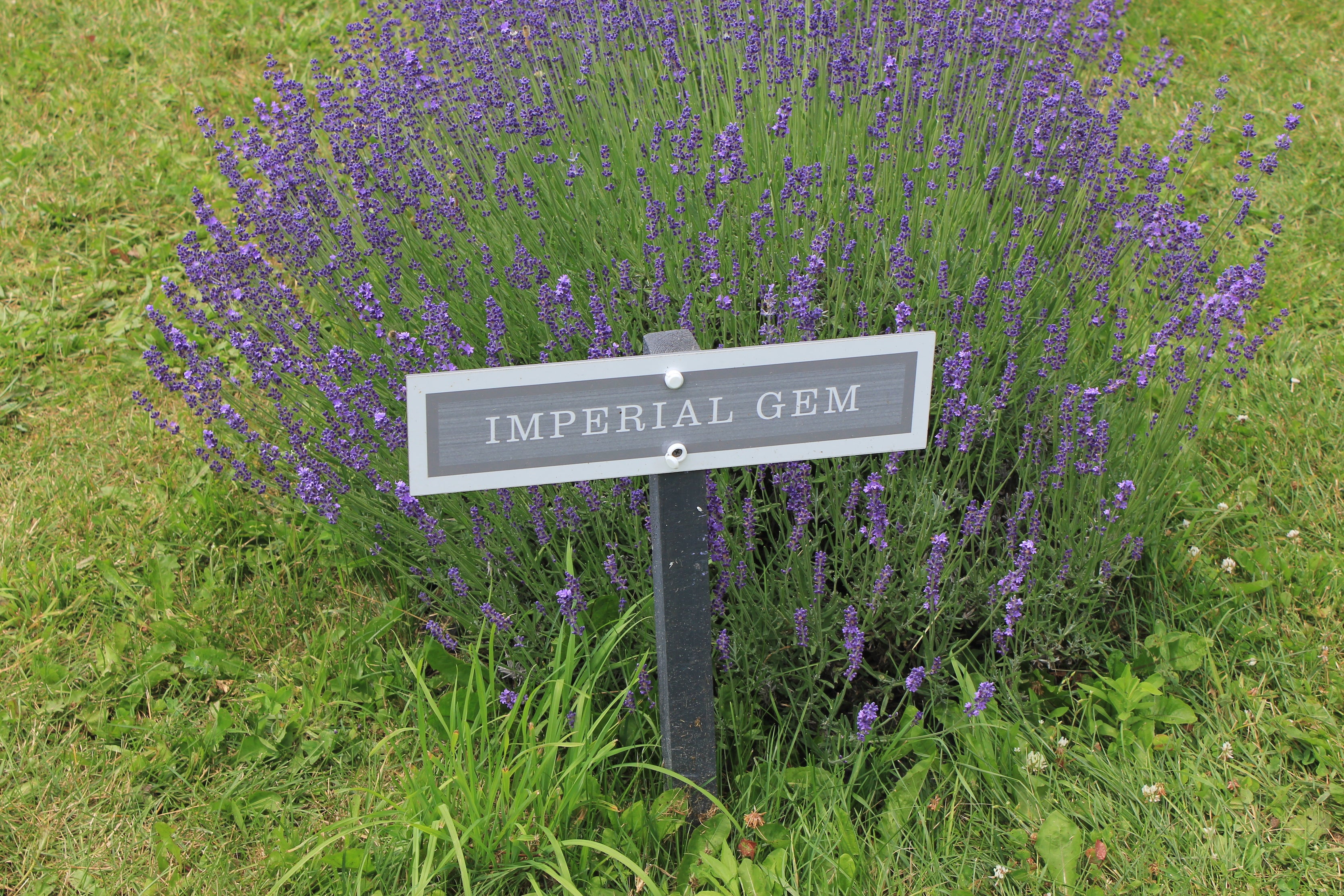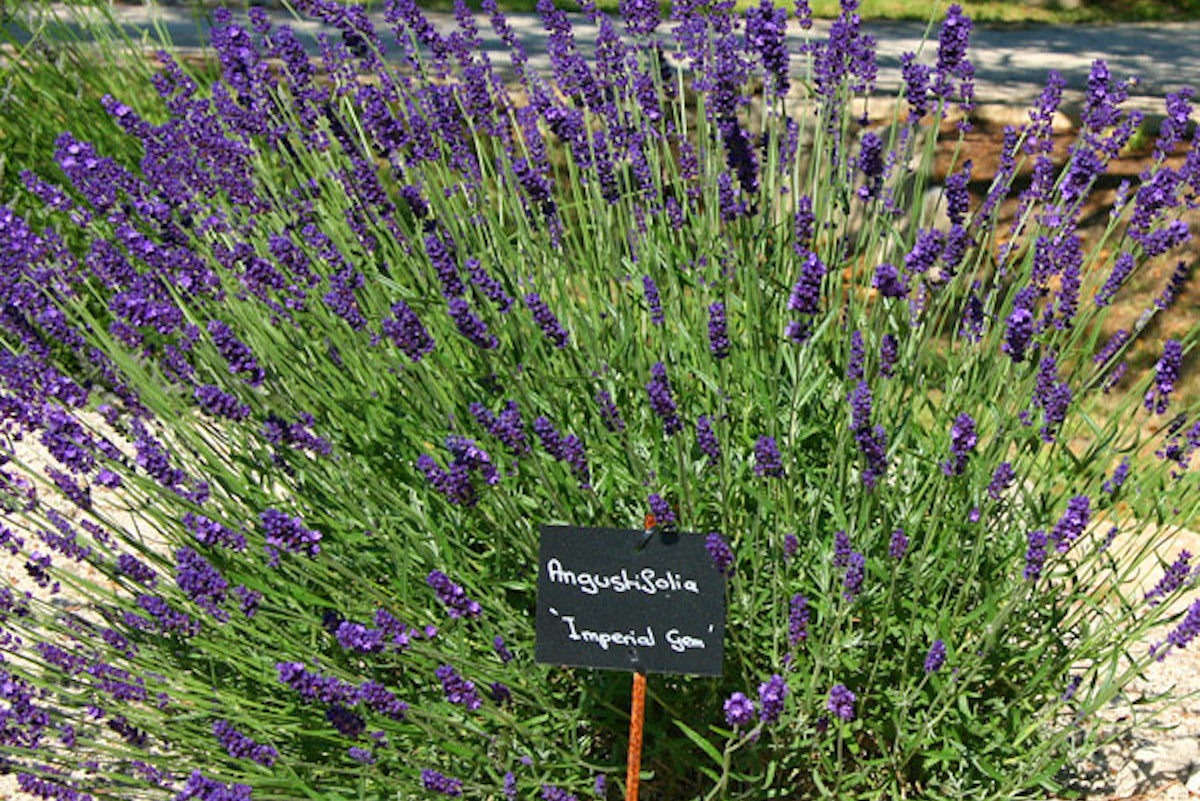Lavandula angustifolia 'Imperial Gem'
Approx. 0.5 litre pot
About this cultivar:
Lavandula angustifolia 'Imperial Gem' was awarded the Royal Horticultural Society Award of Garden Merit in 2001. What did they say? Sprays of dark violet flowers held well clear in a complete sphere over large even domes of gray green foliage. Very dark calyces [protective layer around a flower in bud]. Slightly medicinal scent.
- Position: Full sun, partial shade
- Soil: Almost any soil, dry soil
- Flowers: June, July, August
- Other features: Royal Horticultural Society Award of Garden Merit (RHS AGM), Bees and Butterflies, Cut Flowers or Dried Flowers, Scented, Suitable for Container
- Hardiness: H5 - Hardy in most places throughout the UK even in severe winters (-15 to -10°C), Fully hardy
- Habit: Clump forming, bushy
- Foliage: Deciduous
- Height: 40 - 60 cm (1.3 - 2 ft)
- Spread: 40 - 60 cm (1.3 - 2 ft)
- Time to full growth: 2 to 5 years
- Plant type: Herbaceous Perennial
- Colour: Green, purple
- Goes well with: Try Buddleia, Dianthus, Nepeta, Achillea, Euphorbia or Sedum. Also, I think they pair well with Rosa
About this genus:
Lavandula (La-van-du-la) is a genus of 40 wild species plus a dozen or more hybrids and hundreds of named cultivars that are in the mint family. Lavender's claim to fame is the intoxicating aroma of the leaves and flower buds. The name Lavandula is derived from the Latin word lavar for to wash because the ancient Greeks washed themselves with lavender oil to clean themselves and to smell fresh. Although the Greeks called Lavandual Nardus, after the Syrian city of Naarda!
Plants in the genus Lavandula are native from southern Europe into Africa and east from the Arabian penninsula all the way to India, but it has been cultivated by humans all over the world since ancient times. During Roman times, flowers were sold for 100 denarii per pound, which was about the same as a month's wages for a farm laborer, or fifty haircuts from the local barber. One whiff of the essential oils of a lavender plant (called lavandulin) and you will understand why it is so sought after! The odor is pleasant, relaxing, and is thought to cure headaches, help sleeping, and repel mosquitos. In addition, lavender oil is anti-inflammatory and antiseptic. Because of this, lavender oil can be found in thousands of products from soaps to perfumes, skin creams, potpourri, air fresheners, aromatherapy pillows, sachets and a myriad of other scented goodies. Lavender oil is also added to syrup, cheese, milk, baked goods, tea, desserts and is a component of the herbes de Provence herb blend used in gourmet cooking. Although all Lavandula species are pleasantly fragrant, it is English lavender (Lavandula angustifolia) that is considered to have the best scent.
Lavender also refers to a colour...a pale blue-purple shade. Like the scent, the colour is associated with relaxation and is very popular in clothing, interior decorating, and paints/dyes. It is worth noting, though, that some Lavandula flowers deviate from this hue and can be pink, blue, purple or white.
If that weren't enough, Lavandula is a fantastic ornamental plant often featuring attractive silvery leaves (due to the fine hairs that contain the essential oils). Lavandula flowers are small but are produced in dense clusters (inflorescences) on the tips of the flower stalk. Not only are these flowers beautiful, but they attract bees and butterflies. They are very drought tolerate and prefer sunny well drained sites. So, it is funny to find some of them so well in our over-cast, wet clay garden! We've found a few cultivars that do quite well, and they are for sale here.
Be careful when looking at photos of Lavandula in garden books - in reality Lavanadula tend to get quite woody after a while. If you aren't growing them for the fragrance or a specific look may we suggest Nepeta instead? It looks almost identical, It won't go woody, and tolerates the wet much more!
Try pairing Lavandula with other fragrant plants like Buddleia, Dianthus, Nepeta, or other silver-leaved or dark-leaved plants like Achillea, Euphorbia or Sedum. Also, I think they pair well with Rosa!








